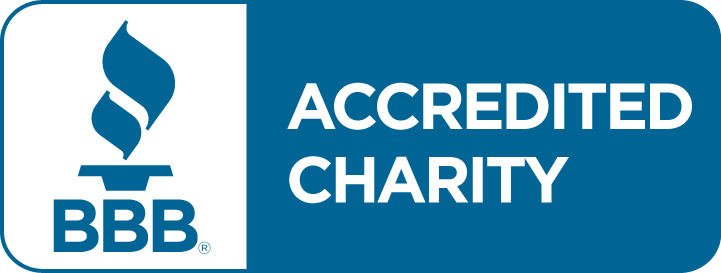Risk of Kidney Problems After Colonoscopy
Risk of Kidney Problems After Colonoscopy
Before a colonoscopy, it is critical to completely empty all stools from the colon, but some patients have experienced a rare, but dangerous issue with kidney problems after colonoscopy prep.
Colonoscopy Prep
In addition to a clear liquid diet, two approaches are used most often:
- A polymer-based laxative with polyethylene glycol 3350 (PEG), which is a powder that is dissolved in two to four quarts of liquid. PEG preps include GoLytely®, Nulytely®, Halflytely®, and Miralax®.
- A saline-based laxative with sodium phosphate (NaP) which is available as a liquid (Fleet Phospho-Soda®) or pill (Visicol® and OsmoPrep®).
Patient acceptance, side effects, and the ability to complete the prep vary, but most studies show little difference in how completely the colon is cleansed.
Warnings for Kidney Problems After Colonoscopy Prep
However, there has been a concern when some patients experienced a rare, but dangerous kidney problem after colonoscopy preparation with sodium phosphate. In March 2006, the FDA alerted doctors about kidney failure from acute phosphate nephropathy associated with the use of both liquid and pills containing sodium phosphate. This has worried both doctors and patients as they chose a colonoscopy prep. Since then, the FDA has asked the manufacturer of Visicol® and OsmoPrep®, Salix Pharmaceuticals, to add a boxed warning to these products.
However, in a study of patients having a colonoscopy in the Henry Ford Health System in Detroit, no difference in the risk of kidney problems with either PEG or sodium phosphate preps was found among patients who didn’t already have pre-existing kidney disease.
7,897 patients had a colonoscopy during the time reviewed, 6,833 of them using a sodium phosphate prep. In the year before their colonoscopy,1,617 patients had known renal problems. Another 3,928 had no testing in the 12 months before or 6 months after their procedure. Among the remaining 2,352 people for whom there was information about kidney functioning, 88 had a kidney problem after colonoscopy. These patients were about equally distributed between the PEG and the sodium phosphate groups.
Risk Factors for Kidney Problems Were:
- Age over 65
- African-American race
- Low baseline glomerular filtration rate (GFR) which measures potential kidney failure
- Hypertension
- Use of certain medications including ACE inhibitors, angiotensin-renin blockers, and thiazide diuretics
Stefan Russman MD and his team concluded, in patients without preexisting renal disease, the risk of renal impairment after colonoscopy appears to be similar between sodium phosphate and PEG users.
However, they warned that Sodium Phosphate use in patients with preexisting renal disease is not recommended, but common in clinical practice. Sodium phosphate should not be used in patients with preexisting serious renal disease, adequate hydration should be assured in all patients, and renal function should be monitored before and after colonoscopy in those at risk of renal dysfunction.
SOURCE: Russman et al, American Journal of Gastroenterology, Early Online Articles, October 26, 2007.
What This Means For Patients
If you are scheduled for a colonoscopy, you need to discuss your medical history and the drugs you are taking with the doctor who will be performing the test. Tests for adequate kidney function before the colonoscopy are probably important.
If you don’t have kidney or heart problems and are younger than 65, there is probably no difference in safety between large volume PEG gastric lavage colonoscopy preps and lower-volume sodium phosphate liquids or pills. You can make a choice that meets your personal needs.
Adequate hydration — replacing liquid lost during the copious liquid bowel movements — is critical no matter what prep you use.
Before a colonoscopy, it is critical to completely empty all stools from the colon, but some patients have experienced a rare, but dangerous issue with kidney problems after colonoscopy prep.
Colonoscopy Prep
In addition to a clear liquid diet, two approaches are used most often:
- A polymer-based laxative with polyethylene glycol 3350 (PEG), which is a powder that is dissolved in two to four quarts of liquid. PEG preps include GoLytely®, Nulytely®, Halflytely®, and Miralax®.
- A saline-based laxative with sodium phosphate (NaP) which is available as a liquid (Fleet Phospho-Soda®) or pill (Visicol® and OsmoPrep®).
Patient acceptance, side effects, and the ability to complete the prep vary, but most studies show little difference in how completely the colon is cleansed.
Warnings for Kidney Problems After Colonoscopy Prep
However, there has been a concern when some patients experienced a rare, but dangerous kidney problem after colonoscopy preparation with sodium phosphate. In March 2006, the FDA alerted doctors about kidney failure from acute phosphate nephropathy associated with the use of both liquid and pills containing sodium phosphate. This has worried both doctors and patients as they chose a colonoscopy prep. Since then, the FDA has asked the manufacturer of Visicol® and OsmoPrep®, Salix Pharmaceuticals, to add a boxed warning to these products.
However, in a study of patients having a colonoscopy in the Henry Ford Health System in Detroit, no difference in the risk of kidney problems with either PEG or sodium phosphate preps was found among patients who didn’t already have pre-existing kidney disease.
7,897 patients had a colonoscopy during the time reviewed, 6,833 of them using a sodium phosphate prep. In the year before their colonoscopy,1,617 patients had known renal problems. Another 3,928 had no testing in the 12 months before or 6 months after their procedure. Among the remaining 2,352 people for whom there was information about kidney functioning, 88 had a kidney problem after colonoscopy. These patients were about equally distributed between the PEG and the sodium phosphate groups.
Risk Factors for Kidney Problems Were:
- Age over 65
- African-American race
- Low baseline glomerular filtration rate (GFR) which measures potential kidney failure
- Hypertension
- Use of certain medications including ACE inhibitors, angiotensin-renin blockers, and thiazide diuretics
Stefan Russman MD and his team concluded, in patients without preexisting renal disease, the risk of renal impairment after colonoscopy appears to be similar between sodium phosphate and PEG users.
However, they warned that Sodium Phosphate use in patients with preexisting renal disease is not recommended, but common in clinical practice. Sodium phosphate should not be used in patients with preexisting serious renal disease, adequate hydration should be assured in all patients, and renal function should be monitored before and after colonoscopy in those at risk of renal dysfunction.
SOURCE: Russman et al, American Journal of Gastroenterology, Early Online Articles, October 26, 2007.
What This Means For Patients
If you are scheduled for a colonoscopy, you need to discuss your medical history and the drugs you are taking with the doctor who will be performing the test. Tests for adequate kidney function before the colonoscopy are probably important.
If you don’t have kidney or heart problems and are younger than 65, there is probably no difference in safety between large volume PEG gastric lavage colonoscopy preps and lower-volume sodium phosphate liquids or pills. You can make a choice that meets your personal needs.
Adequate hydration — replacing liquid lost during the copious liquid bowel movements — is critical no matter what prep you use.
Before a colonoscopy, it is critical to completely empty all stools from the colon, but some patients have experienced a rare, but dangerous issue with kidney problems after colonoscopy prep.
Colonoscopy Prep
In addition to a clear liquid diet, two approaches are used most often:
- A polymer-based laxative with polyethylene glycol 3350 (PEG), which is a powder that is dissolved in two to four quarts of liquid. PEG preps include GoLytely®, Nulytely®, Halflytely®, and Miralax®.
- A saline-based laxative with sodium phosphate (NaP) which is available as a liquid (Fleet Phospho-Soda®) or pill (Visicol® and OsmoPrep®).
Patient acceptance, side effects, and the ability to complete the prep vary, but most studies show little difference in how completely the colon is cleansed.
Warnings for Kidney Problems After Colonoscopy Prep
However, there has been a concern when some patients experienced a rare, but dangerous kidney problem after colonoscopy preparation with sodium phosphate. In March 2006, the FDA alerted doctors about kidney failure from acute phosphate nephropathy associated with the use of both liquid and pills containing sodium phosphate. This has worried both doctors and patients as they chose a colonoscopy prep. Since then, the FDA has asked the manufacturer of Visicol® and OsmoPrep®, Salix Pharmaceuticals, to add a boxed warning to these products.
However, in a study of patients having a colonoscopy in the Henry Ford Health System in Detroit, no difference in the risk of kidney problems with either PEG or sodium phosphate preps was found among patients who didn’t already have pre-existing kidney disease.
7,897 patients had a colonoscopy during the time reviewed, 6,833 of them using a sodium phosphate prep. In the year before their colonoscopy,1,617 patients had known renal problems. Another 3,928 had no testing in the 12 months before or 6 months after their procedure. Among the remaining 2,352 people for whom there was information about kidney functioning, 88 had a kidney problem after colonoscopy. These patients were about equally distributed between the PEG and the sodium phosphate groups.
Risk Factors for Kidney Problems Were:
- Age over 65
- African-American race
- Low baseline glomerular filtration rate (GFR) which measures potential kidney failure
- Hypertension
- Use of certain medications including ACE inhibitors, angiotensin-renin blockers, and thiazide diuretics
Stefan Russman MD and his team concluded, in patients without preexisting renal disease, the risk of renal impairment after colonoscopy appears to be similar between sodium phosphate and PEG users.
However, they warned that Sodium Phosphate use in patients with preexisting renal disease is not recommended, but common in clinical practice. Sodium phosphate should not be used in patients with preexisting serious renal disease, adequate hydration should be assured in all patients, and renal function should be monitored before and after colonoscopy in those at risk of renal dysfunction.
SOURCE: Russman et al, American Journal of Gastroenterology, Early Online Articles, October 26, 2007.
What This Means For Patients
If you are scheduled for a colonoscopy, you need to discuss your medical history and the drugs you are taking with the doctor who will be performing the test. Tests for adequate kidney function before the colonoscopy are probably important.
If you don’t have kidney or heart problems and are younger than 65, there is probably no difference in safety between large volume PEG gastric lavage colonoscopy preps and lower-volume sodium phosphate liquids or pills. You can make a choice that meets your personal needs.
Adequate hydration — replacing liquid lost during the copious liquid bowel movements — is critical no matter what prep you use.




